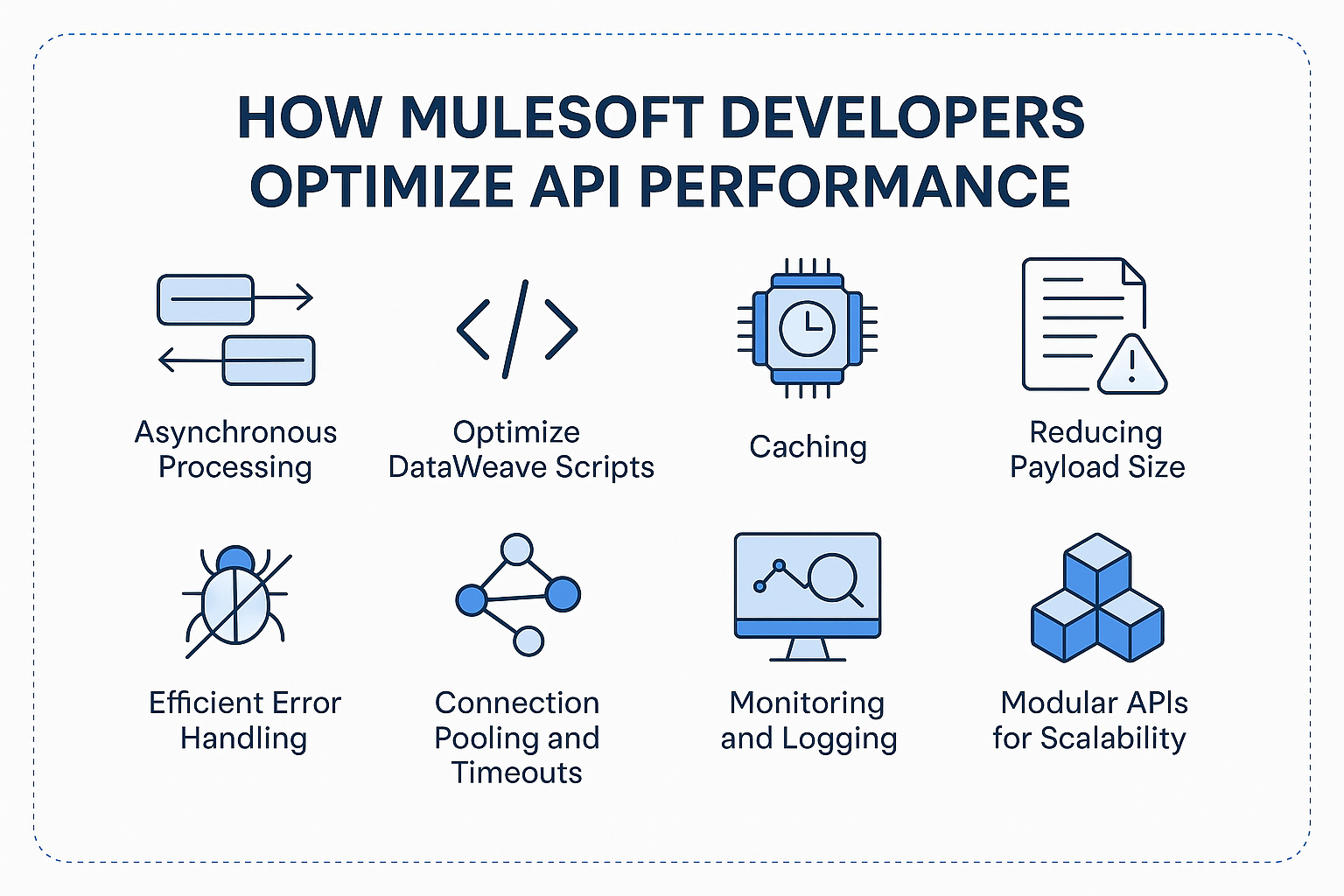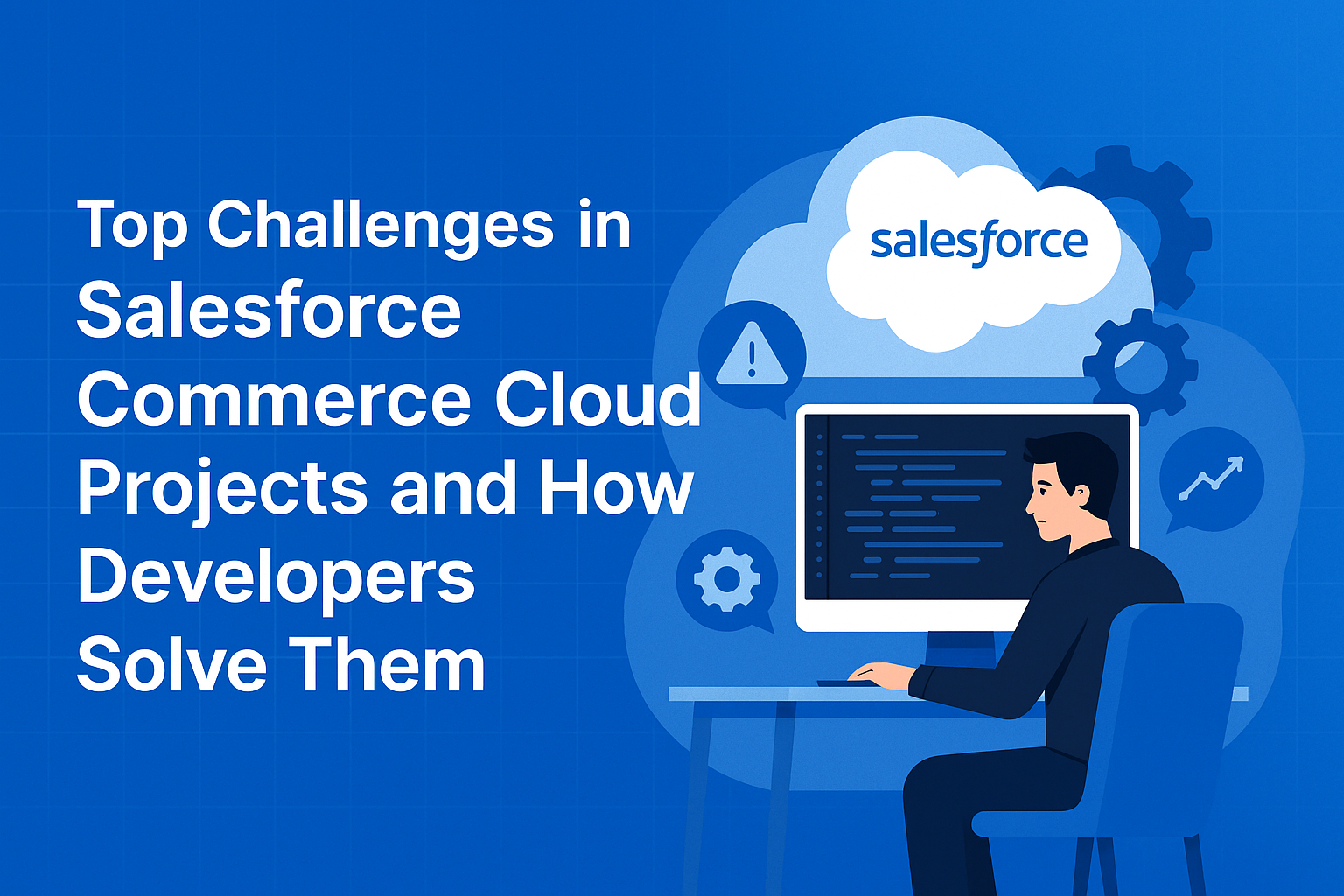How MuleSoft Developers Optimize API Performance

In today’s fast-paced digital landscape, APIs are the lifeblood of modern enterprise architecture. As businesses increasingly rely on real-time data and seamless integration across systems, API performance becomes a mission-critical concern. Slow APIs lead to user dissatisfaction, reduced conversions, and wasted infrastructure costs.
MuleSoft, a leader in integration platforms, offers powerful tools to build, manage, and scale APIs. However, optimizing performance isn't automatic—it takes skilled MuleSoft developers who understand the platform inside out.
This blog explores the key technical strategies MuleSoft developers use to optimize API performance, ensuring faster responses, lower latency, and scalable integration across distributed systems.
1. Leveraging Asynchronous Processing
One of the most effective ways to boost performance in MuleSoft is through asynchronous flows. These allow different tasks to be executed in parallel, preventing blocking and enabling faster throughput.
Techniques:
Async Scope: Executes non-critical tasks (like logging or external calls) in a separate thread.
Scatter-Gather: Runs multiple flows in parallel and aggregates the result.
VM Queues: Useful for handling background jobs or decoupled processes.
By using async processing, developers can reduce API response time without sacrificing functionality, especially in high-volume or microservice-based environments.
Real-World Example:
A payment gateway API offloads transaction logging and notification sending to an async scope, keeping the payment response under 500ms.
2. Optimizing DataWeave Scripts
- DataWeave is MuleSoft's powerful data transformation language. It is also one of the most performance-sensitive areas in an API.
- Best Practices:
- Minimize nested loops and transformations.
- Stream large payloads instead of loading them into memory.
- Reuse functions across flows to reduce redundancy.
- Use mapObject when working with key-value pairs, and map for arrays.
- Poorly optimized DataWeave code can cause slowdowns, especially in APIs that process large datasets or real-time feeds.
Tip: MuleSoft developers often log execution time for complex transformations to monitor impact.
3. Implementing Caching Strategies
- Not all data needs to be fetched in real-time. Caching frequently accessed information can reduce load on downstream systems and dramatically improve response times.
- Caching Techniques in MuleSoft:
- Object Store: Cache specific results like authentication tokens, product catalogs, etc.
- HTTP Cache-Control Headers: Instruct consumers to cache responses.
- API Manager Policies: Built-in response caching for GET endpoints.
Example Use Case:
A weather API caches hourly data to prevent repetitive calls to a third-party weather service, cutting average latency by 40%.
4. Reducing Payload Size and Complexity
Large and complex payloads slow down both transmission and processing. MuleSoft developers address this by:
- Returning only required fields (data pruning)
- Implementing pagination for large datasets
- Enabling GZIP compression for HTTP responses
- Avoiding unnecessary metadata in the payload
Best Practice: Use API design contracts (RAML) to enforce what clients can request or return.
5. Efficient Error Handling
Error handling not only improves reliability but also enhances performance. Overly complex error logic can slow down APIs.
Developer Tips:
- Use On Error Propagate and On Error Continue strategically.
- Avoid unnecessary retries or catch-all logic that hides critical issues.
- Implement global error handlers for consistency and simplicity.
- Efficient error handling ensures the API doesn’t consume unnecessary compute cycles on repeated failures or malformed requests.
6. Connection Pooling and Timeouts
Connection management plays a critical role in performance. Poor configuration can lead to bottlenecks or even outages.
Best Practices:
- Set appropriate connection pool sizes for HTTP, DB, and JMS connectors.
- Configure read, connection, and response timeouts.
- Close unused or failed connections properly to avoid memory leaks.
Monitoring: Use Anypoint Runtime Manager to track active connections and pool saturation.
7. Monitoring with Anypoint Monitoring & Logging
You can’t optimize what you don’t measure. MuleSoft offers Anypoint Monitoring for runtime metrics and Anypoint Analytics for API-level KPIs.
Key Metrics to Monitor:
- Average response time
- Throughput per API
- Error rates and failure patterns
- Memory and CPU usage of workers
- Developers also implement custom logging to measure execution time at flow level and identify bottlenecks.
8. Using Retry Scopes and Circuit Breakers
Reliability is a key component of performance. If an API fails under stress or frequent calls, it’s not truly performant.
Strategies:
- Retry Scopes with exponential backoff for transient errors
- Circuit Breakers to avoid overloading failing systems
- Rate Limiting to control abusive or misconfigured client behavior
- These patterns help prevent cascading failures and maintain high availability.
9. Building Modular APIs for Scalability
Monolithic APIs tend to become performance bottlenecks as they grow. MuleSoft promotes API-led connectivity, breaking integration into:
- System APIs (connect to data)
- Process APIs (orchestrate logic)
- Experience APIs (serve front-end needs)
- This layered architecture allows individual APIs to be independently scaled, optimized, and reused across multiple apps.
Final Thoughts
API performance is not just about faster responses—it’s about building scalable, resilient, and cost-efficient systems that deliver business value. MuleSoft developers play a critical role in this by implementing best practices around async processing, transformation efficiency, caching, modular design, and observability.
When properly optimized, MuleSoft-powered APIs can handle thousands of transactions per second, integrate with complex legacy systems, and deliver real-time insights—all while maintaining performance and reliability.
Note: IndiBlogHub features both user-submitted and editorial content. We do not verify third-party contributions. Read our Disclaimer and Privacy Policyfor details.







